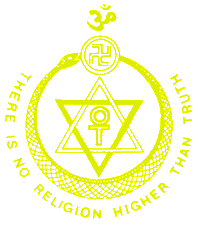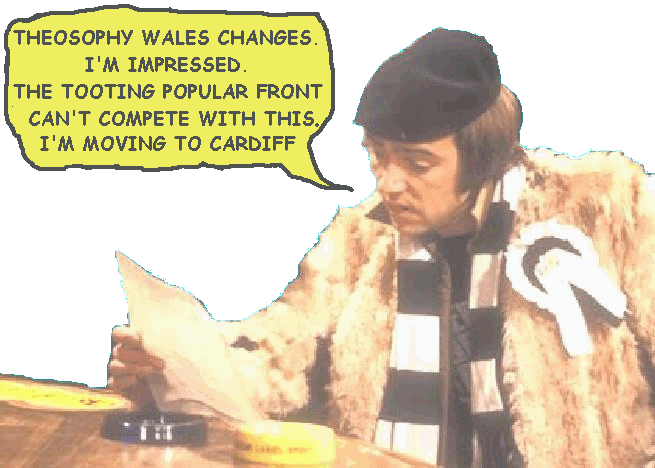HORNET
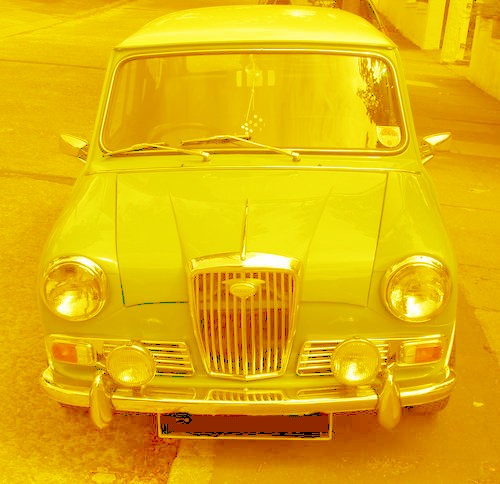
The
Wolseley Hornet 1960s model
An
upmarket version of the Mini
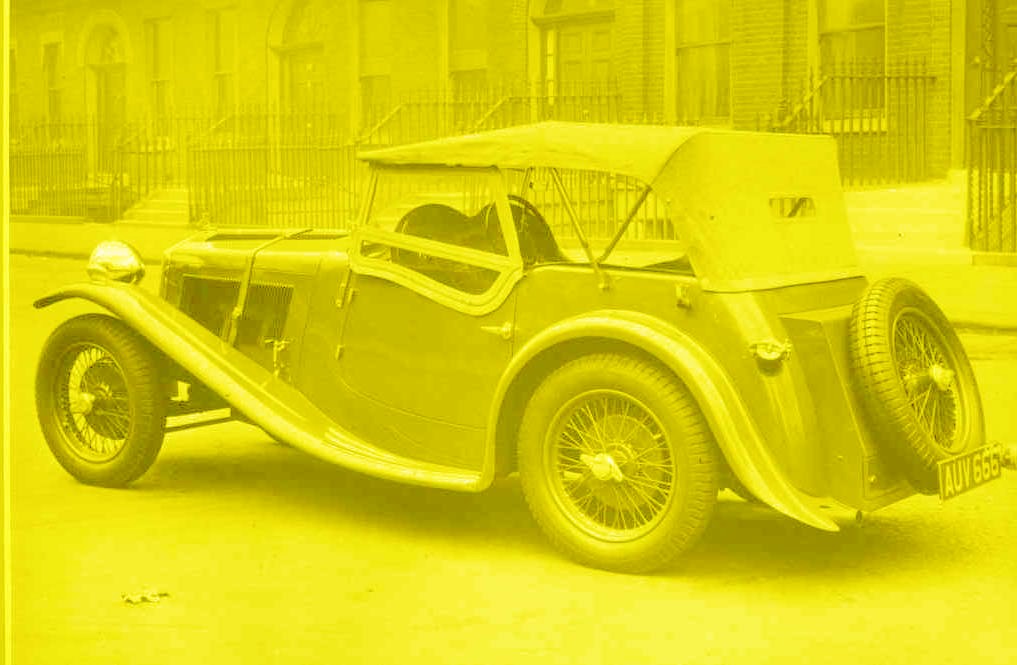
A
1930s Wolseley Hornet sports car
The
bodywork for these was made to order by a coachbuilder
of
the customer’s choice and there were many variations of this car.
The
series ran from 1930 to 1935
The Wolseley Hornet both in its 1930s sports
car
incarnation, and its 1960s posh mini version,
has
very little (in fact nothing) to do with
Theosophy
but we have found that Theosophists and new
enquirers do like pictures of classic cars
and we get a lot of positive feedback.
You can find Theosophy Wales groups
in
Bangor, Cardiff, Conwy & Swansea
Theosophy Wales has no controlling
body
and is made up of independent groups
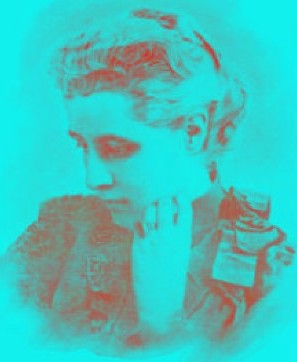
________________________
The
Ancient Wisdom
by
Annie
Besant
The Law of Sacrifice
The study of
the Law of Sacrifice follows naturally on the study of the Law of Karma, and
the understanding of the former, it was once remarked by a Master, is as
necessary for the world as the understanding of the latter. By an act of
Self-sacrifice the LOGOS became manifest for the emanation of the universe, by
sacrifice the
universe is maintained, and by sacrifice man reaches perfection. (The Hindu
will remember the opening words of the Brihadaranyakopanishad, that the dawn is
in sacrifice; the Zoroastrian will recall how Ahura Mazda came forth from an
act of sacrifice; the Christian will think of the Lamb – the symbol of the
LOGOS – slain from the foundation of the world.) Hence every religion that
springs from Ancient Wisdom has sacrifice as a central teaching, and some of
the profoundest truths of occultism are rooted in the law of sacrifice.
An attempt to
grasp, however feebly, the nature of the sacrifice of the LOGOS may prevent us
from falling into the very general mistake that sacrifice is an essentially
painful thing; whereas the very essence of sacrifice is a voluntary and glad
pouring forth of life that others may share in it; and pain only arises when
there is discord in the nature of the sacrificer, between the higher whose joy
is in giving and the lower whose satisfaction lies in grasping and holding.It
is that discord alone that introduces the element of pain, and in the supreme
Perfection, in the LOGOS, no discord could arise; the One is the perfect chord
of Being, of infinite melodious concords, all tuned to a single note, in which
Life and Wisdom and Bliss are blended into one keynote of Existence.
The sacrifice
of the LOGOS lay in His voluntarily
circumscribing
His infinite life in order that He might manifest. Symbolically, in the
infinite ocean of light, with centre everywhere and with circumference nowhere,
there arises a
full-orbed
sphere of living light, a LOGOS, and the surface of that sphere is His will to
limit Himself that He may become manifest, His veil ( This is the Self-limiting
power of the LOGOS, His Maya, the limiting principle by which all forms are
brought forth. His Life appears as "Spirit," His Maya as
"Matter," and
these are
never disjoined during manifestation.)in which He incloses Himself that within
it a universe may take form.
That for
which the sacrifice is made is not yet in existence; its future being lies in
the "thought" of the LOGOS alone; to him it owes its conception and
will own its manifold life. Diversity could not arise in the "partless
Brahman" save for this voluntary sacrifice of Deity taking on Himself form
in order to emanate myriad forms, each dowered with a spark of His life and
therefore with the power evolving into His image. "The primal sacrifice
that causes the birth of beings is named action (karma)," it is said
(Bhagavad Gîtâ, viii,3.), and this coming forth into activity from the bliss of
perfect repose of self-existence has ever been recognised as the sacrifice of
the LOGOS.
That
sacrifice continues throughout the term of the universe, for the life of the
LOGOS is the sole support of every separated " life " and He limits
His life in each of the myriad forms to which He gives birth, bearing all the
restraints and limitations implied in each form. From any one of these He could
burst forth
at any
moment, the infinite Lord, filling the universe with His glory; but only by
sublime patience and slow and gradual expansion can each form be led upward
until it becomes a self-dependent centre of boundless power like Himself.
Therefore does He cabin Himself in forms, and bear all imperfection till
perfection is
attained, and His creature is like unto Himself and one with Him, but with its
own thread of memory.
Thus this pouring
out of His life into forms is part of the original sacrifice, and has in it the
bliss of the eternal Father sending forth His offspring as separated lives,
that each may evolve an identity that shall never perish, and yield its own
note blended with all others to swell the eternal song of bliss, intelligence
and life.
This marks
the essential nature of sacrifice. Whatever other elements may become mixed
with the central idea; it is the voluntary pouring out of life that others may
partake of it, to bring others into life and to sustain them in it till they
become
self-dependent, and this is but one expression of divine joy. There is always
joy in the exercise of activity which is the expression of the power of the
actor; the bird takes joy in the outpouring of song, and quivers with the mere
rapture of singing; the painter rejoices in the creation of his genius, in
the putting
into form of his idea; the essential activity of the divine life must lie in
giving, for there is nothing higher than itself from which it can receive; if
it is to be active at all – and manifested life is active motion – it must pour
itself out. Hence the sign of the spirit is giving, for spirit is the active
divine life in every form.
But the
essential activity of matter, on the other hand, lies in receiving; by
receiving life-impulses it is organised into forms; by receiving them these are
maintained; on their withdrawal they fall to pieces. All its activity is of
this nature of receiving, and only by receiving can it endure as a form.
Therefore it
is always
grasping, clinging, seeking to hold for its own; the persistence of the form
depends on its grasping and retentive power, and it will therefore seek to draw
into itself all it can, and will grudge every fraction with which it parts. Its
joy will be in seizing and holding; to it giving is like courting death.
It is very
easy from this standpoint, to see how the notion arose that sacrifice was
suffering. While the divine life found its delight in exercising its activity
of giving, and even when embodied in form cared not if the form perished by the
giving, knowing it to be only its passing expression and the means of its
separated growth; the form which felt its life-forces pouring away from it
cried out in anguish, and sought to exercise its activity in holding, thus
resisting the outward flow. The sacrifice diminished the life-energies the form
claimed as its own; or even entirely drained them away, leaving the form to
perish.
In the lower
world of form this was the only aspect of sacrifice cognisable, and the form
found itself driven to slaughter, and cried out in fear and agony. What wonder
that men, blinded by form, identified sacrifice with the agonising form instead
of with the free life that gave itself, crying gladly:"Lo! I come to do
thy will, O
God; I am content to do it." What wonder that men – conscious of a higher
and a lower nature, and oft identifying their self-consciousness more with the
lower than with the higher – felt the struggle of the lower nature, the form,
as their own struggles, and felt that they were accepting suffering in
resignation
to a higher will, and regarded sacrifice as that devout and resigned acceptance
of pain.
Not until man
identifies himself with the life instead of with the form can the element of
pain in sacrifice be gotten rid of. In a perfectly harmonised entity, pain
cannot be, for the form is then the perfect vehicle of the life, receiving or
surrendering with ready accord. With the ceasing of struggle comes the ceasing
of pain. For suffering arises from jar, from friction, from antagonistic
movements, and where the whole nature works in perfect harmony the conditions
that give rise to suffering are not present.
The law of
sacrifice being thus the law of life - evolution in the universe, we find every
step in the ladder is accomplished by sacrifice – the life pouring itself out
to take birth in a higher form, while the form that contained it perishes.
Those who look only at the perishing forms see Nature as a vast charnel house;
while those who see the deathless soul escaping to take new and
higher form
hear ever the joyous song of birth from the upward springing life.
The Monad in
the mineral kingdom evolves by the breaking up of its forms for the production
and support of plants. Minerals are disintegrated that plant-forms may be built
out of their materials; the plant draws from the soil its nutritive
constituents,
breaks them up, and incorporates them into its own substance. The mineral forms
perish that the plant forms may grow, and this law of sacrifice stamped on the
mineral kingdom is the law of evolution of life and form. The life passes
onward and the Monad evolves to produce the vegetable kingdom, the perishing of
the lower form being the condition for the appearing and the support of the
higher.
The story is
repeated in the vegetable kingdom, for its forms in turn are sacrificed in
order that animal forms may be produced and may grow; on every side grasses,
grains, trees perish for the sustenance of animal bodies; their tissues are
disintegrated that the materials comprising them may be assimilated by the
animal and build up its body. Again the law of sacrifice is stamped on
the world,
this time on the vegetable kingdom; its life evolves while its forms perish;
the Monad evolves to produce the animal kingdom, and the vegetable is offered
up that the animal forms may be brought forth and maintained.
So far the
idea of pain has scarcely connected itself with that of sacrifice, for, as we
have seen in the course of our studies, the astral bodies of plants are not
sufficiently organised to give rise to any acute sensations either of pleasure
or of pain. But as we consider the law of sacrifice in its working in the
animal kingdom, we cannot avoid the recognition of the pain there involved in
the breaking up of forms. It is true that the amount of pain caused by the
preying of one animal upon another in "the state of nature " is
comparatively trivial in each case, but still some pain occurs.
It is also
true that man, in the part he has played in helping to evolve animals, has much
aggravated the amount of pain, and has strengthened instead ofdiminishing the
predatory instincts of carnivorous animals; still, he did not implant those
instincts, though he took advantage of them for his own purposes,
and
innumerable varieties of animals, with the evolution of which man has had
directly nothing to do, prey upon each other, the forms being sacrificed to the
support of other forms, as in the mineral and vegetable kingdoms.
The struggle
for existence went on long before man appeared on the scene, and accelerated
the evolution alike of life and of forms, while the pains accompanying the
destruction of forms began the long task of impressing on the evolving Monad
the transitory nature of all forms, and the difference between
the forms
that perished and the life that persisted .
The lower
nature of man was evolved under the same law of sacrifice as ruled in the lower
kingdoms. But the outpouring of divine Life which gave the human Monad came a
change in the way in which the law of sacrifice worked as the law of life. In
man was to be developed the will, the self-moving, self-initiated
energy, and
the compulsion which forced the lower kingdoms along the path of evolution
could not therefore be employed in his case, without paralysing the growth of
this new and essential power.
No mineral,
no plant, no animal was asked to accept the law of sacrifice as a voluntarily
chosen law of life. It was imposed upon them from without, and it forced their
growth by a necessity from which they could not escape. Man was to have the
freedom of choice necessary for the growth of a discriminative and
self-conscious
intelligence, and the question arose: "How can this creature be left free
to choose, and yet learn to choose to follow the law of sacrifice, while yet he
is a sensitive organism, shrinking from pain, and pain is inevitable in the
breaking up of sentient forms?"
Doubtless
eons of experience, studied by a creature becoming ever more intelligent, might
have finally led man to discover that the law of sacrifice is the fundamental
law of life; but in this, as in so much else, he was not left to his own
unassisted efforts. Divine Teachers were there at the side of man in his infancy,
and they authoritatively proclaimed the law of sacrifice, and
incorporated
it in a most elementary form in the religions by which They trained the dawning
intelligence of man.
It would have
been useless to have suddenly demanded from these child-souls that they should
surrender without return what seemed to them to be the most desirable objects,
the objects on the possession of which their life in form depended. They must
be led along a path which would lead gradually to the heights of voluntary self-sacrifice.
To this end they were first taught that
they were not
isolated units, but were parts of a larger whole, and that their lives were
linked to other lives both above and below them.
Their
physical lives were supported by lower lives, by the earth; by plants, they
consumed these, and in thus doing they contracted a debt which they were bound
to pay, Living on the sacrificed lives of others, they must sacrifice in turn
something which should support other lives, they must nourish even as they
were
nourished, taking the fruits produced by the activity of the astral entities
that guide physical Nature, they must recruit the expended forces by suitable
offerings.
Hence have
arisen all the sacrifices to these forces – as science calls them – to these
intelligences guiding physical order, as religions have always taught.
As fire
quickly disintegrated the dense physical, it quickly restored the etheric
particles of the burnt offerings to the ethers; thus the astral particles were
easily set free to be assimilated by the astral entities concerned with the
fertility of the earth and the growth of plants. Thus the wheel of production
was kept turning, and man learned that he was constantly incurring debts to
Nature which he must as constantly discharge.
Thus the
sense of obligation was implanted and nurtured in his mind, and the duty that
he owed to the whole, to the nourishing mother Nature, became impressed on his
thought. It is true that this sense of obligation was closely connected with
the idea that its discharge was necessary for his own welfare, and that the
wish to continue to prosper moved him to the payment of his debt.
He was but a
child-soul, learning his first lessons, and this lesson of the interdependence
of lives, of the life of each depending on the sacrifice of others, was of
vital importance to his growth. Not yet could he feel the divine joy of giving;
the reluctance of the form to surrender aught that nourished it had first to be
overcome, and sacrifice became identified with this surrender of
something
valued, a surrender made from a sense of obligation and the desire to continue
prosperous.
The next
lesson removed the reward of sacrifice to a region beyond the physical world. First,
by a sacrifice of material goods, material welfare was to be secured. Then the
sacrifice of material goods was to bring enjoyment in heaven, on the other side
of death. The reward of the sacrificer was of a higher kind,
and he
learned that the relatively permanent might be secured by the sacrifice of the
relatively transient – a lesson that was important as leading to discriminative
knowledge.The clinging of the form to physical objects was exchanged for a
clinging to heavenly joys. In all exoteric religions we find this educative
process resorted to by the Wise Ones – too wise to expect
child-souls
the virtue of unrewarded heroism, and content, with a sublime patience, to coax
their wayward charges slowly along a pathway that was a thorny and a stony one
to the lower nature.
Gradually men
were induced to subjugate the body, to overcome its sloth by the regular daily
performance of religious rites, often burdensome in their nature, and to
regulate its activities by directing them into useful channels; they were
trained to conquer the form and to hold it in subjection to the life, and to
accustom the
body to yield itself to works of goodness and charity in obedience to the
demands of the mind, even while that mind was chiefly stimulated by a desire to
enjoy reward in heaven.
We can see
among the Hindus, the Persians, the Chinese, how men were taught to recognise
their manifold obligations; to make the body yield dutiful sacrifice of
obedience and reverence to ancestors, to parents, to elders; to bestow charity
with courtesy; and to show kindness to all. Slowly men were helped to
evolve both
heroism and self-sacrifice to a high degree, as witness the martyrs who
joyfully flung their bodies to torture and death rather than deny their faith
or be false to their creed.
They looked
indeed for a "crown of glory" in heaven as a recompense for the
sacrifice of the physical form, but it was much to have overcome the clinging
to the physical form, and to have made the invisible world so real that it
outweighed the visible.
The next step
was achieved when the sense of duty was definitely established; when the
sacrifice of the lower to the higher was seen to be "right," apart
from all question of a reward to be received in another world; when the
obligation owed by the part to the whole was recognised, and the yielding of
service by the
form that
existed by the service of others was felt to be justly due without any claim to
wages being established thereby.
Then man
began to perceive the law of sacrifice as the law of life, and voluntarily to
associate himself with it; and he began to learn to disjoin himself in idea
from the form he dwelt in and to identify himself with the evolving life. This
gradually led him to feel a certain indifference to all the activities of form,
save as they consisted in "duties that ought to be done," and to
regard all of them as mere channels for the life-activities that were due
to the world,
and not as activities performed by him with any desire for their results. Thus
he reached the point already noted, when karma attracting him to the three
worlds ceased to be generated, and he turned the wheel of existence because it
ought to be turned, and not because its revolution brought any
desirable
object to himself.
The full recognition
of the law of sacrifice, however, lifts man beyond the mental plane – whereon
duty is recognised as duty, as "what ought to be done because it is
owed" – to that higher plane of Buddhi where all selves are felt as one,
and where all activities are poured out for the use of all, and not for the
gain of a separated self. Only on that plane is the law of sacrifice felt as
a joyful
privilege, instead of only recognised intellectually as true and just.
On the
buddhic plane man clearly sees that life is one, that it streams out
perpetually as the free outpouring of the love of the LOGOS, that life holding
itself separate is a poor and a mean thing at best, and an ungrateful one to
boot. There the whole heart rushes upwards to the LOGOS in one strong surge of
love and worship, and gives itself in joyfullest self-surrender to be a channel
of His life and love to the world. To be a carrier of His light, a messenger of
His
compassion, a worker in His realm – that appears as the only life worth living;
to hasten evolution, to serve the Good Law, to lift part of the heavy burden of
the world – that seems to be the very gladness of the Lord Himself.
From this
plane only can a man act as one of the Saviours of the world, because on it he
is one with the selves of all. Identified with humanity where it is one, his
strength, his love, his life can flow downwards into any or into every
separated self.
He has become
a spiritual force, and the available spiritual energy of the world-system is increased
by pouring into it of his life. The forces he used to expend on the physical ,
astral, and mental planes, seeking things for his separated self, are now all
gathered up in one act of sacrifice, and, transmuted thereby into spiritual
energy, they pour down upon the world as spiritual life.
This
transmutation is wrought by the motive which determines the plane on which the
energy is set free.
If a man’s
motive be the gain of physical objects, the energy liberated works only on the
physical plane; if he desire astral objects, he liberates energy on the astral
plane; if he seek mental joys, his energy functions on the mental plane; but if
he sacrifice himself to be a channel of the LOGOS, he liberates energy on the
spiritual plane, and it works everywhere with the potency and
keenness of a
spiritual force. For such a man, action and inaction are the same; for he does
everything while doing nothing, he does nothing while doing everything.
For him, high
and low, great and small are the same; he fills any place that needs filling,
and the LOGOS is alike in every place and in every action. He can flow into any
form, he can work along any line, he knows not any longer choice or difference;
his life by sacrifice has been made one with the life of the LOGOS – he sees
God in everything and everything in God. How then can place or form make to him
any difference? He no longer identifies himself with form, but is
self-conscious Life. "Having nothing, he possesseth all things "
asking for nothing, everything flows into him. His life is bliss, for he is one
with his Lord, who is Beatitude; and, using form for service without attachment
to it,
"he has
put and end to pain."
Those who
grasp something of the wonderful possibilities which open out before us as we
voluntarily associate ourselves with the law of sacrifice will wish to begin
that voluntary association long ere they can rise to the heights just dimly
sketched. Like other deep spiritual truths, it is eminently practical in its
application to daily life, and none who feel its beauty need to hesitate to
begin to work
with it. When a man resolves to begin the practice of sacrifice, he will train
himself to open every day with an act of sacrifice, the offering of himself,
ere the day’s work begins, to Him to whom he gives his life; his first waking
thought will be this dedication of all his power to his Lord.
Then each
thought, each word, each action in daily life will be done as a sacrifice – not
for its fruit, not even as duty, but as the way in which, at the moment, his
Lord can be served. All that comes will be accepted as the expression of His
will; joys, troubles, anxieties, successes, failures, all to him are welcome as
marking out his path of service; he will take each happily as
it comes and
offer it as a sacrifice; he will loose each happily as it goes, since its going
shows that his Lord has no longer need for it.
Any powers he
has he gladly uses for service; when they fail him, he takes their failure with
happy equanimity; since they are no longer available he cannot give them. Even
suffering that springs from past causes not yet exhausted can be changed into a
voluntary sacrifice by welcoming it; taking possession of it by
willing it, a
man may offer it as a gift, changing it by this motive into a spiritual force.
Every human life offers countless opportunities for this practice of the law of
sacrifice, and every human life becomes a power as these opportunities are
seized and utilised.
Without any
expansion of his waking consciousness, a man may thus become a worker on the
spiritual planes, liberating energy there which pours down into the lower
worlds. His self-surrender here in the lower consciousness, imprisoned as it is
in the body, calls out responsive thrills of life from the buddhic aspect of
the Monad which is his true Self, and hastens the time when that Monad shall
become the spiritual Ego, self-moved and ruling all his vehicles, using each of
them at will as needed for the work that is to be done.
In no way can
progress be made so rapidly, and the manifestation of all the powers latent in
the Monad be brought about so quickly, as by the understanding and the practice
of the law of sacrifice. Therefore it was called by a Master, "The Law of
evolution for man." It has indeed profounder and more mystic aspects than
any touched on here, but these will unveil themselves without words to the
patient and loving heart whose life is all a sacrificial offering. There are
things that are heard only in the stillness; there are teachings that can be
uttered only by "The Voice of the Silence." Among these are the
deeper truths rooted in the law of sacrifice.
_____________________________________
Annie Besant Visits Cardiff 1924

A
“G” reg Aug 1968 – July 1969 Wolseley Hornet MK III
The
1960s Wolseley Hornet was produced by the British Motor Corporation
(BMC)
from 1961 to 1969 and was upgraded thro’ MKI, II & III models
although
the outward design remained the same.
The
Wolseley Hornet was similar to the more expensive Riley Elf which ran
for
the same period with only the Riley grill and badge to distinguish
it
to the casual observer.
_____________________________
More Theosophy Stuff
with these links
Cardiff Theosophical
Society meetings are informal
and there’s always a
cup of tea afterwards
The
Cardiff Theosophical Society Website
The
National Wales Theosophy Website
Bangor,
Cardiff, Conwy & Swansea
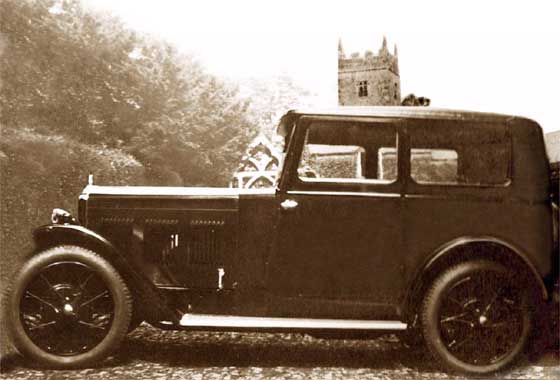
A
1931 Wolseley Hornet saloon style convertible
The Wolseley Hornet was a lightweight
saloon car produced by the Wolseley Motor Company from 1930 to 1935.
It had a six cylinder (1271cc) engine with a single overhead cam, and
hydraulic brakes. The engine was modified in 1932 to make it shorter and it was
moved forwards on the chassis. In 1935 the engine size was increased to
1378 cc.
Wolseley supplied the firsts cars as either an enclosed saloon with steel
or fabric body or open two seater. From 1931 it was available without the
saloon body, and was used as the basis for a number of sporting specials for
which the customer could choose a styling from a range of coachbuilders. In
1932 Wolsley added two and four seat coupés to the range. For its final year of
production the range was rationalised to a standard saloon and coupé.
A three speed gearbox was fitted to the earliest cars but this was upgraded
to a four speed in 1932 and fitted with synchromesh from 1933. A freewheel
mechanism could be ordered in 1934.The engine was also used in a range of MG
cars.
If you
run a Theosophy Group, please feel free
to use
any of the material on this site
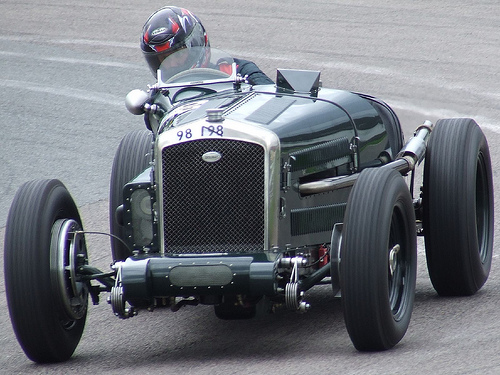
1930s
Wolseley Hornet racing car circuiting the track in modern times
The Most Basic Theosophy
Website in the Universe
A quick overview of Theosophy
and the Theosophical Society
If you run a Theosophy Group you
can use this as an introductory handout.
Theosophy Cardiff’s Instant Guide
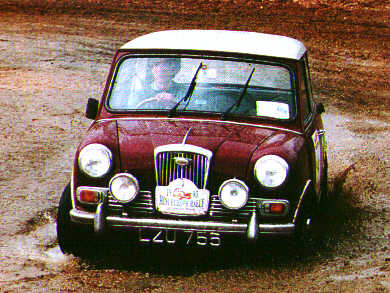
Wolseley
Hornet on a rally circa 1963
Theosophical Movement in Wales
as it separates into independent
groups that run do their own show
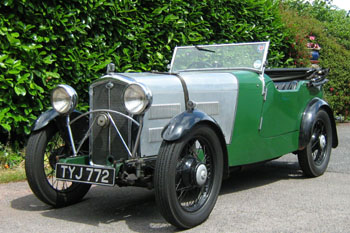
Early
1930s Wolseley Hornet customized roadster design
Basic
front mudguards not extending to runner boards.
Only
the driver gets a windscreen wiper
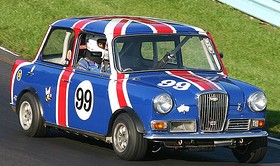
Patriotic
Wolseley Hornet on the race track in 1965
One liners and quick explanations
H P
Blavatsky is usually the only
Theosophist
that most people have ever
heard
of. Let’s put that right
The Voice of the Silence Website
An
Independent Theosophical Republic
Links
to Free Online Theosophy
Study
Resources; Courses, Writings,
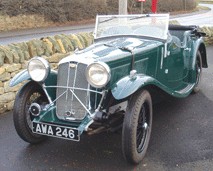
Early
1930s Customized Wolseley Hornet with integrated front mudguards
and
runner boards. Two windscreen wipers on this one.
The main criteria for the inclusion of
links on this site is that they have some
relationship (however tenuous) to Theosophy
and are lightweight, amusing or entertaining.
Topics include Quantum Theory and Socks,
Dick Dastardly and Legendary Blues Singers.

Four
views of the car in the picture above
A selection of articles on Reincarnation
Provided in response to the large
number of enquiries we receive at
Cardiff Theosophical Society on this subject
The Voice of the Silence Website
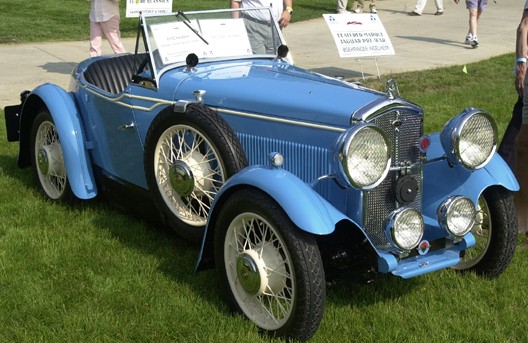
Swallow Wolseley Hornet 1932
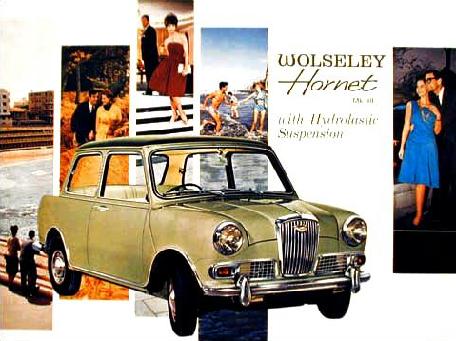
A
leaflet promoting the new hydrolastic suspension introduced in the mid sixties.
This
became standard on many BMC models including the Mini, 1100, 1300
&
1800 models. Suspension was maintained by means of a sealed fluid system
which
was claimed to be very comfortable but appeared to make some people
seasick
in the larger cars. As the cars got older, the suspension might burst
causing
the car’s suspension to collapse on one side meaning a difficult
drive
home or to a garage.
This is for
everyone, you don’t have to live
in Wales to
make good use of this Website
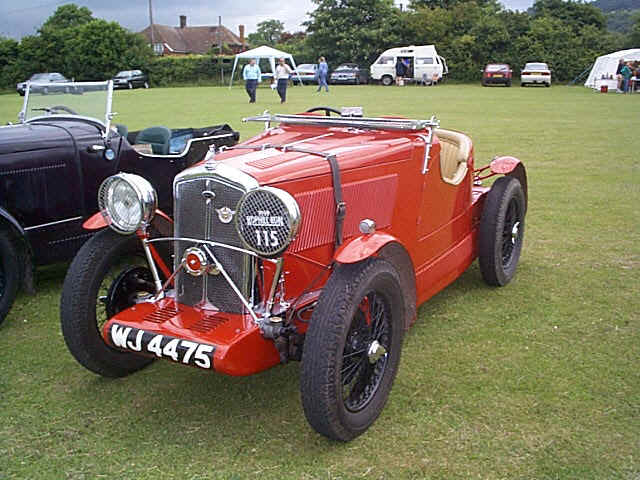
1930s
No Aardvarks
were harmed in the

A 1966 Wolseley Hornet convertible
by Crayford Engineering
Convertible 1960s Hornets
were not standard and were very rare as
were all convertibles in the
Mini range.
Crayford did a run of 57
Hornet convertibles for Heinz to be given
as prizes in a competition
Within the British Isles, The Adyar Theosophical Society
has Groups in;
Bangor*Basingstoke*Billericay*Birmingham*Blackburn*Bolton*Bournemouth
Bradford*Bristol*Camberley*Cardiff*Chester*Conwy*Coventry*Dundee*Edinburgh
Folkstone*Glasgow*Grimsby*Inverness*Isle of
Man*Lancaster*Leeds*Leicester
Letchworth*London*Manchester*Merseyside*Middlesborough*Newcastle upon
Tyne
North Devon*Northampton*Northern Ireland*Norwich*Nottingham
Perth*Republic of Ireland*Sidmouth*Southport*Sussex*Swansea*Torbay
Tunbridge Wells*Wallasey*Warrington*Wembley*Winchester*Worthing
The Spiritual Home of Urban Theosophy
The Earth Base for Evolutionary Theosophy
A
B
C
D
EFG
H
IJ
KL
M
N
OP
QR
S
T
UV
WXYZ
Complete Theosophical Glossary in Plain Text Format
1.22MB
Quick
Explanations with Links to More Detailed Info
What is Theosophy ? Theosophy Defined (More Detail)
Three Fundamental Propositions Key Concepts of Theosophy
Cosmogenesis
Anthropogenesis
Root Races
Karma
Ascended Masters After Death States Reincarnation
The Seven Principles of Man Helena Petrovna Blavatsky
Colonel Henry Steel Olcott William Quan Judge
The Start of the Theosophical Society
History of the Theosophical Society
Theosophical Society Presidents
History of the Theosophical Society in Wales
The Three Objectives of the Theosophical Society
Explanation of the Theosophical Society Emblem
Glossaries of Theosophical Terms
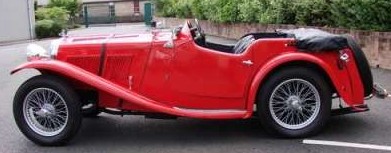
Another
good example of a 1930s Wolseley Hornet
An Outstanding Introduction to Theosophy
By a student of Katherine Tingley
Elementary Theosophy Who is the Man? Body and Soul
Body, Soul and Spirit Reincarnation Karma

1960s
Riley Elf
Outwardly
the same as the Wolseley Hornet except for the badge & grill
A
bit more expensive
What Theosophy Is From the Absolute to Man
The Formation of a Solar System The Evolution of Life
The Constitution of Man After Death Reincarnation
The Purpose of Life The Planetary Chains
The Result of Theosophical Study
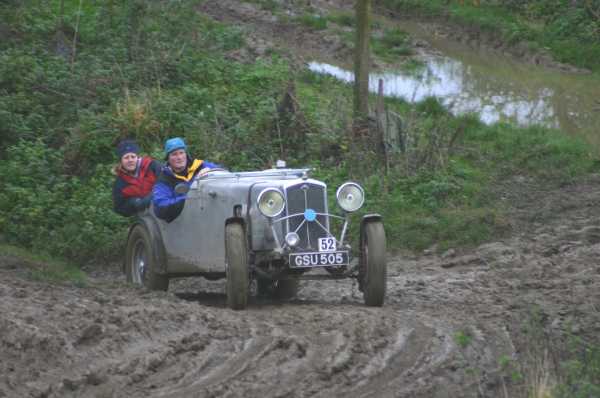
1930’s
Wolseley Hornet on a hill climb trial
An Outline of Theosophy
Charles Webster Leadbeater
Theosophy - What it is How is it Known? The Method of Observation
General Principles The Three Great Truths The Deity
Advantage Gained from this
Knowledge The Divine Scheme
The Constitution of Man The True Man Reincarnation
The Wider Outlook Death Man’s Past and Future
Cause and Effect What Theosophy does for us

Side
and rear view of a 1960s Wolseley Hornet
Try these if you are looking
for a local
Theosophy Group or Centre
UK Listing of Theosophical Groups
Please tell us about your UK Theosophy Group

1960s
Wolseley Hornet promotional leaflet
___________________
into categories and
presented according to relevance of website.
Web Directory
- Add Link - Submit Article - Online Store - Forum
______________________

General pages about Wales, Welsh History
and The History of Theosophy in Wales
Wales is a
Principality within the United Kingdom and has an eastern
border with
England. The land area is just over 8,000 square miles.
Snowdon in North
Wales is the highest mountain at 3,650 feet.
The coastline is
almost 750 miles long. The population of Wales
as at the 2001 census is 2,946,200.
________________
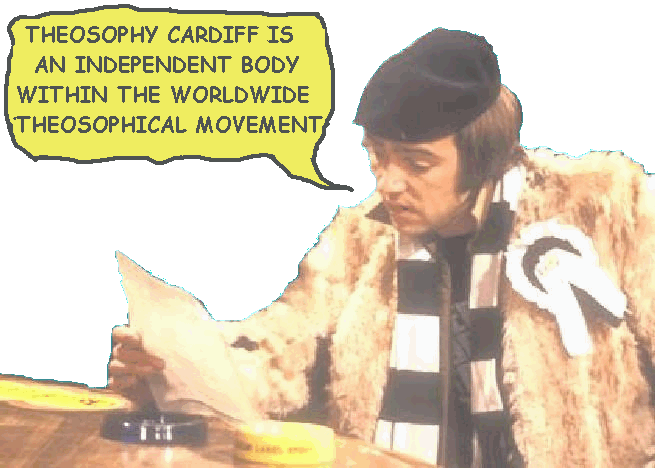
Bangor Conwy & Swansea Lodges are
members
of the Welsh Regional Association
(Formed 1993).
Theosophy Cardiff separated from the
Welsh Regional
Association in March 2008 and became an independent
body within the Theosophical Movement in March 2010
High
Drama & Worldwide Confusion
as
Theosophy Cardiff Separates from the
Welsh
Regional Association (formed 1993)
Theosophy Cardiff cancels its Affiliation
to the Adyar Based Theosophical Society
Cardiff, Wales, UK, CF24 – 1DL
